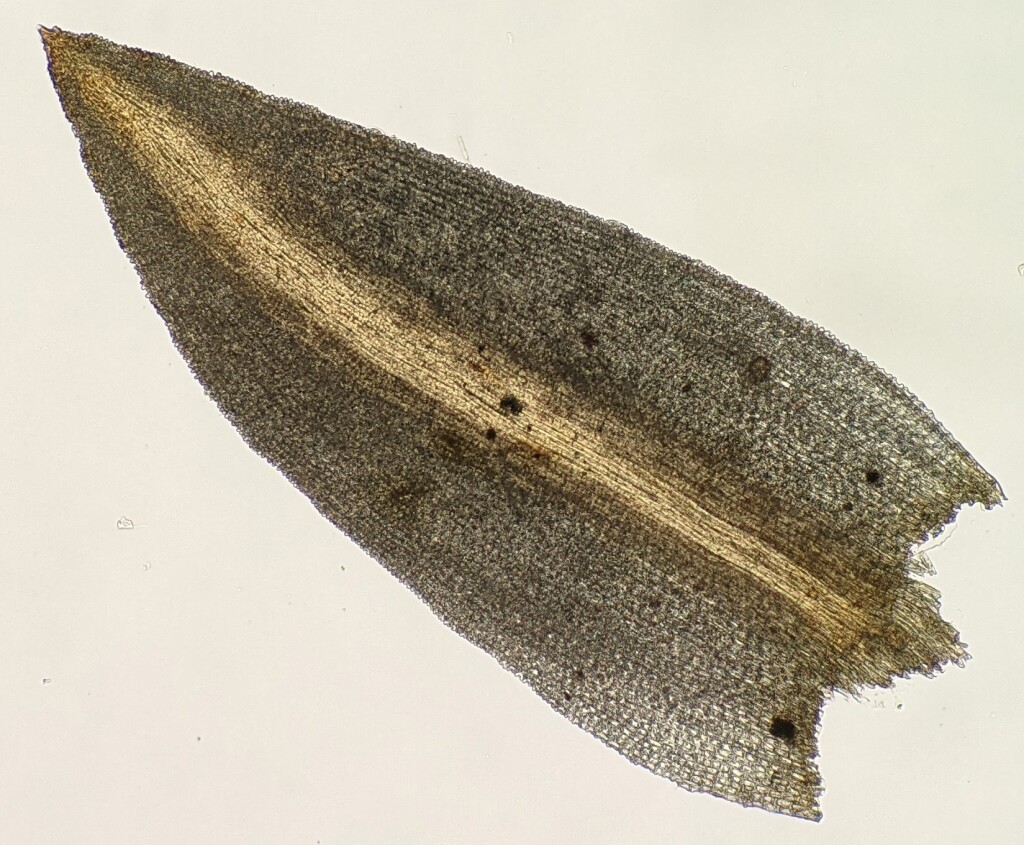Chrysoblastella chilensis
(Mont.) ReimersDioicous. Loose tufts on soil. Stems 1–2.5 cm long, with simple or branched erect stems with sparse brown rhizoids arising from reddish brown prostrate creeping stem. Non-deciduous globose, obovate to pyriform tubers, (0.56–) 1–2 mm long, (0.35–) 0.5–0.9 mm wide, occasionally produced laterally or terminally on stems or on rhizoids, producing new shoots that may eventually detach as vegetative propagules. Leaves erect-spreading when moist, little altered to incurved or appressed when dry, arranged in three distinct helicoidal rows, broadly oblong- to narrowly triangular or ovate-lanceolate, 1–3 mm long, 0.4–0.7 mm wide, ±fleshy, channelled beyond widest point; apices obtuse or acute; costae percurrent; margins entire or with occasional teeth at apex, plane to ±recurved in basal half, without a border; cells in apical half bistratose, quadrate to short-rectangular, 6–15.5 μm long, 6–10 μm wide, papillose; cells toward base unistratose for half width, otherwise bistratose, rectangular, 25–40 μm long, 7–10 μm wide, smooth or less prominently papillose. Setae 1–2 cm long, yellowish. Capsules erect, oblong or cylindric, straight or slightly curved, 2–3 mm long. Opercula rostrate or oblique-rostrate, 1–1.5 mm long. Peristome of 16 teeth irregularly divided almost to base into 2 filaments.
VAlp. Edges of streams or in other constantly moist sites in the alpine zone or in subalpine Eucalyptus pauciflora woodland throughout the Victoria Alps west to Lake Mountain. Also NSW and Tas. New Zealand, Macquarie, Campbell and South Georgia Islands and South America, south from Bolivia.
 Spinning
Spinning